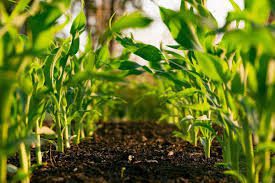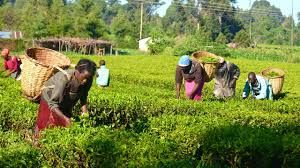Agriculture’s Economic Impact is significant in shaping a nation’s economy, acting as a foundation for growth, employment, and sustainable development.
In many countries, particularly those with abundant arable land and favorable climates, agriculture directly contributes to the Gross Domestic Product (GDP) through the production of crops, livestock, and other essential commodities.
Yet, its impact extends beyond the farm, supporting various industries like food processing, transportation, and retail, and generating income for a substantial portion of the population, especially in rural areas.
In numerous developing nations, agriculture not only provides a primary source of income but also ensures food security, reducing the need for imports and helping stabilize the economy.
As agricultural production increases, it boosts GDP, enhances trade balances, and can reduce dependency on foreign exchange by meeting domestic food demands.
Moreover, agriculture stimulates economic activity by creating jobs and enabling further spending in local economies. When people earn income from agricultural activities, they contribute to consumer demand in other sectors, thus supporting broader economic growth.
The sector also has significant multiplier effects higher agricultural productivity lowers food costs, improves nutrition, and frees up income for households to spend on other goods and services.
Additionally, agriculture-driven exports bring in valuable foreign exchange and improve trade balances, often creating opportunities for global partnerships and investment.
Agriculture also drives industrial growth by increasing demand for inputs like machinery, chemicals, and transport services. As agriculture thrives, it supports related industries, enabling a more diversified and resilient economy.
Investments in agriculture lead to improved infrastructure, such as roads, irrigation, and energy systems, particularly in rural areas.
This not only boosts agricultural productivity but also integrates rural communities more effectively into the national economy, promoting both social and economic development.
Agriculture is much more than a source of food; it is a central component of economic stability, job creation, and development.
Its influence on GDP, employment, and infrastructure makes it a pillar of national economic health, especially in countries where a significant portion of the population relies on agriculture for their livelihood.
By fostering innovation and sustainability within the sector, nations can continue to drive economic growth, secure food supplies, and enhance the quality of life for their citizens.
Employment Opportunities in Agriculture
1. Direct Employment: Agriculture provides jobs for millions of people globally, including farmers, farm workers, and seasonal laborers. It remains a primary source of employment in many rural areas.
2. Supporting Industries: Agriculture creates jobs in related sectors such as food processing, transportation, marketing, and retail. These linkages contribute to a broader economic impact beyond the farm gate.
3. Skill Development: The agricultural sector requires various skills, from manual labor to technical expertise in areas such as agronomy, veterinary science, and agricultural engineering, offering diverse career paths.
4. Women in Agriculture: Women play a crucial role in agricultural production and management, contributing significantly to food security and economic growth, particularly in developing countries.
Agriculture’s Contribution to Exports

1. Trade Balance: Agricultural products form a significant portion of many countries’ exports, impacting trade balances and generating foreign exchange earnings.
2. Global Market Access: Countries with robust agricultural sectors can access global markets, enhancing their economic growth and stability.
3. Value-Added Products: Exporting processed agricultural products, such as canned goods, dairy products, and organic foods, can increase revenue and create additional jobs within the sector.
4. Agricultural Commodities: Major agricultural commodities like grains, fruits, and livestock contribute significantly to national exports, influencing global market dynamics and prices.
Linkages Between Agriculture and Related Industries
1. Input Supply Industries: Agriculture relies on various input suppliers, including seed, fertilizer, pesticide, and machinery manufacturers, creating interdependent economic relationships.
2. Food Processing Industry: The agricultural sector feeds the food processing industry, which adds value to raw agricultural products, contributing to economic growth and job creation.
3. Retail and Distribution: Agricultural production supports the retail and distribution sectors, ensuring that food products reach consumers efficiently and effectively.
4. Research and Development: Agricultural innovation drives advancements in technology and practices, linking the agricultural sector to research institutions and universities, fostering economic growth and sustainability.
Read Also: Trichomoniasis: Description, Damages Caused, Control and Preventive Measures
Case Studies: Countries with Strong Agricultural Sectors

Many countries have developed robust agricultural sectors that significantly contribute to their economies. Studying these case studies provides insights into best practices, challenges faced, and potential future trends in agriculture.
1. United States: Leading Agricultural Producer
The United States is one of the largest agricultural producers globally, with a diverse range of crops and livestock.
i. Diverse Production: The U.S. produces a wide variety of agricultural products, including corn, soybeans, wheat, fruits, and vegetables.
ii. Innovation and Technology: The use of advanced technologies, such as precision agriculture and biotechnology, enhances productivity and sustainability.
iii. Export Powerhouse: The U.S. is a leading exporter of agricultural products, contributing significantly to the global food supply.
2. Brazil: Agricultural Giant in South America
Brazil’s agricultural sector plays a crucial role in its economy, particularly in the production of soybeans and beef.
i. Soybean Production: Brazil is one of the largest producers and exporters of soybeans, which are essential for animal feed and oil production.
ii. Sustainable Practices: The country has made strides in adopting sustainable farming practices, balancing productivity with environmental conservation.
iii. Investment in Infrastructure: Improved transportation and logistics have enhanced Brazil’s ability to export agricultural products efficiently.
3. China: Transforming Agriculture Through Innovation
China has made significant investments in its agricultural sector, focusing on increasing productivity and ensuring food security.
i. Technological Advancements: The use of modern agricultural techniques, such as mechanization and genetically modified organisms (GMOs), has improved crop yields.
ii. Government Support: Policies and subsidies have been implemented to support farmers and enhance agricultural productivity.
iii. Rural Development: Efforts to improve rural infrastructure and access to markets have contributed to the overall growth of the agricultural sector.
Read Also: 18 Medicinal Health Benefits Of Ligustrum lucidum (Glossy Privet)
Challenges Facing the Agricultural Sector

While agriculture plays a vital role in economic development, it also faces several challenges that need to be addressed.
1. Climate Change: Changes in weather patterns, extreme weather events, and shifting growing seasons pose significant risks to agricultural production and food security.
2. Resource Depletion: Overuse of water, soil degradation, and loss of biodiversity threaten the sustainability of agricultural systems.
3. Market Access: Smallholder farmers often face challenges accessing markets and fair prices for their products, impacting their livelihoods.
4. Policy and Regulatory Issues: Inconsistent policies and regulations can hinder agricultural growth and innovation, limiting opportunities for farmers.
Future Trends in Agriculture and Economic Growth
The future of agriculture is expected to evolve, driven by technological advancements and changing consumer preferences.
1. Sustainable Practices: There will be a greater emphasis on sustainable agriculture practices that promote environmental stewardship and resource conservation.
2. Technology Integration: The integration of technologies such as artificial intelligence, robotics, and blockchain will enhance efficiency and transparency in agricultural supply chains.
3. Urban Agriculture: As urban populations grow, urban agriculture will become increasingly important, providing fresh produce and reducing food miles.
4. Focus on Nutrition: There will be a shift towards producing nutrient-dense crops to address global health challenges and improve food security.
Agriculture has a profound economic impact through its role in employment, exports, and linkages with related industries.
Recognizing this impact is crucial for policymakers and stakeholders to develop strategies that enhance the agricultural sector’s contributions to national and global economies.
Do you have any questions, suggestions, or contributions? If so, please feel free to use the comment box below to share your thoughts. We also encourage you to kindly share this information with others who might benefit from it. Since we can’t reach everyone at once, we truly appreciate your help in spreading the word. Thank you so much for your support and for sharing!
Read Also: 1Hydroponics Guide 101: All You Need to Know About it
Frequently Asked Questions
We will update this section soon.

